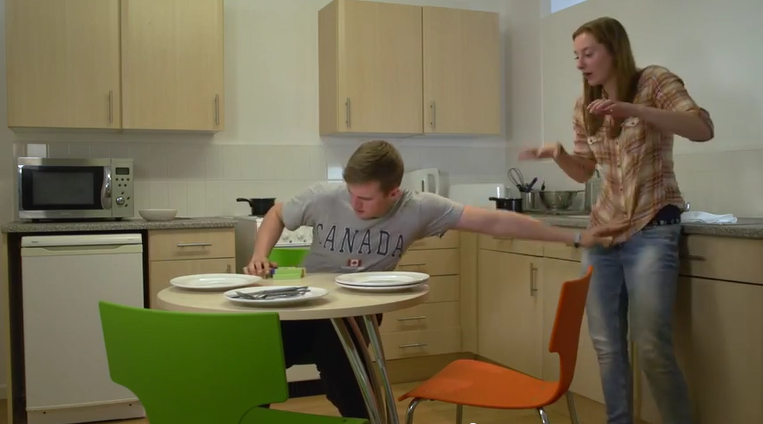Behaviours that Challenge Related to Interruption of Repetitive Behaviours
Sometimes we see an increase in behaviours that challenge in situations where repetitive behaviours are interrupted or terminated.
Examples of times when repetitive behaviours are interrupted include: stopping someone from completing a repetitive action or ritual such as lining up objects or turning the lights on and off before leaving a room.
As with the behaviours that challenge associated with anxiety, this may be more likely to occur in individuals who show autistic characteristics. To see an example of behaviour related to interruption of a repetitive behaviour watch the short film at the top of the page (role play actors).
How to manage behaviours that challenge related to interruption of repetitive activities
These suggestions should only be carried out with support from a professional, such as a clinical psychologist, who can ensure that the behaviour is definitely related to interruption of repetitive behaviours. Sometimes the cause of behaviours that challenge can be very difficult to spot.
- Give a warning period after which the activity will be terminated. It might be helpful to do this using an egg timer, picture of a clock or other visual cue that the person can look at and help you to set up. That way, the person can see how much time is left before the activity will be terminated.
- It may be useful to give the person an object or picture which signals the end of an activity such as a coloured piece of card. This may provide the person with a strong visual cue which signals that the activity is finished.
- If behaviours that challenge occur when you ask the person to stop engaging in the activity, try to ensure that the termination of the activity is followed through.
- Modify your response to any behaviours that challenge at this time, do not give any eye-contact, do not speak and do not show any change in your facial expression.
- If you need to respond to protect and restrict behaviour, do so with no eye-contact, no change in facial expression and do not speak to the person at that time.
- If the person is able to stop the activity and clear away without engaging in any behaviours that challenge, reward them for this with praise and positive attention.




